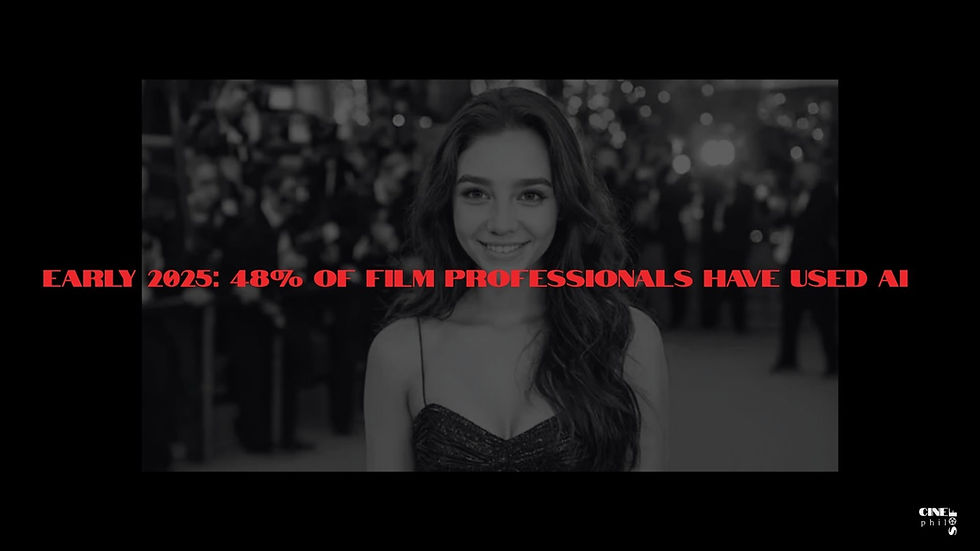The Terminator Turns 40: Futuristic Fears and Failures
- Sofia R. Willcox

- May 15, 2024
- 3 min read
Updated: May 24, 2024
2024 marks the 40th anniversary of classic science fiction films from the 1980s, a period when many iconic movies emerged on the horizon. These films were fruits of the critical acclaim and commercial success of the "Star Wars" (George Lucas, 1977) saga and were products of their time, reflecting concerns about pollution, Cold War anxieties, nuclear power, and the depletion of natural resources. Let’s decode the universe of "The Terminator" (James Cameron, 1984).
"The Terminator" remains relevant after four decades, depicting conflicts between machines and humans that resonate with contemporary debates on artificial intelligence (AI). On one hand, AI is fascinatingly helpful; on the other, it is frightening in its potential to replace, recreate, and manipulate humans. This was notable recently with the Netflix documentary "What Jennifer Did" (2024-), the posters from Civil War (Alex Garland, 2024) and scenes from Late Night with Devil (Cameron and Colin Cairnes, 2024). Besides that, in Hollywood strike one of their demands was the lack of regulations and stellar actors' concerns regards being replaced by the artificial intelligence. The titular character could be seen as pioneering these discussions. He is sent from the near future (2029) to 1984.
In the first movie, the Terminator starts as a villain hunting Sarah Connor. However, in the second movie, he undergoes a redemption arc, transforming into a protagonist and exploring his humanity versus his cyborg nature. The increased focus on his point-of-view shots and the symbolic loss of his sunglasses (the eyes being the windows to the soul) highlight his learning about emotions and humanity. He becomes a father figure to John Connor, reflected in their similar costumes. He embodies a new masculinity intertwined with fatherhood, reflecting New Hollywood's evolving portrayal of male heroes. This dynamic, combined with the Terminator's powerful physique and skills, echoes postwar hero archetypes. The Terminator’s black leather jacket, sunglasses, catchphrases, and Austrian accent create a unique character that embodies otherness and exoticism.
Throughout the franchise, spectators follow John Connor's growth from a child, representing hope for the future, to the white saviour of humanity. However, despite the main conflict's forward-thinking nature, there are concerning issues in terms of representation, especially in a futuristic story.
Sarah Connor (Linda Hamilton) initially blends active independence with passive damsel-in-distress traits, relying on Kyle Reese (Michael Biehn). However, by the third movie, Sarah’s character is absent, a victim of the "women in refrigerators" trope and possibly Hollywood’s ageism. "Terminator Genisys" (2015) revisits her childhood with Emilia Clarke, and Lena Headey stars in "Terminator: The Sarah Connor Chronicles" (2008-2009). "Terminator: Dark Fate" (2019) uses a stunt actress and recreates Hamilton’s face with CGI, highlighting Hollywood's issues with aging women.
"The Rise of the Machines" (2003) introduces new young female characters: T-X (Kristanna Loken), a powerful femme fatale villain, and Kate Connor (Claire Danes), John Connor's love interest. Both characters are young, with the film failing to develop their roles beyond traditional tropes. It's noteworthy that T-X’s endoskeleton was originally meant to convey an androgynous shape, allowing the android to assume the superficial traits of both men and women. "Terminator Salvation" (2009) further exemplifies this with the Smurfette trope through Dr. Serena Kogan (Helena Bonham Carter) and other secondary female characters. Meanwhile, the Terminator's unchanging appearance underscores his cyborg condition, with skin that ages and heals, contrasting the changing human characters around him.
The series also lacks diversity, depicting a future dominated by white, straight, cisgender males in the leading roles. The United States is portrayed as a developed, machine-ruled society, while Latin America is depicted as a primary, undeveloped escape route, painted with broad stereotypes. This is evident in Sarah's escape to Mexico in the first film and her retirement in Guatemala in "Terminator: Dark Fate" (2019).
In conclusion, "The Terminator" series has had a lasting impact on science fiction, particularly in its exploration of technology and humanity. However, it raises questions about the inclusivity and accessibility of this future for diverse societal groups, who should be active participants rather than mere backdrops. Additionally, it prompts us to consider whether this envisioned future is equitable or dominated by capitalist interests with limited access to technology.




Comments